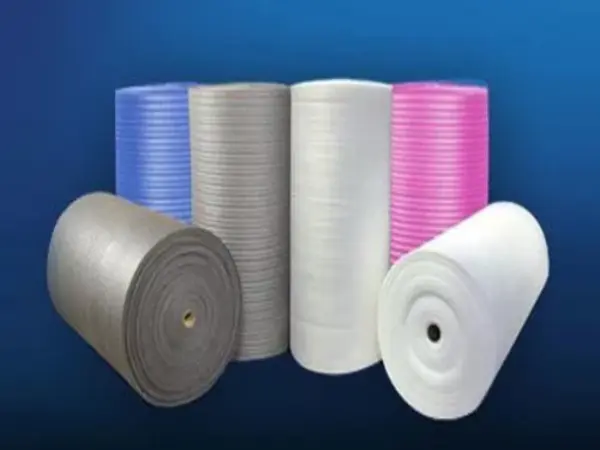What is EPE Form Roll?
“EPE foam roll is a type of foam packaging material made from low-density polyethylene (LDPE) resin. It is a lightweight and flexible material that is commonly used for packaging fragile or delicate items during transportation or storage.”
History of EPE Form Roll in Brief Below:
The development of expanded polyethylene (EPE) foam can be traced back to the mid-20th century. In the 1950s, a German chemist named Karl Ziegler discovered a way to polymerize ethylene using a catalyst, which led to the creation of low-density polyethylene (LDPE) plastic.
In the 1960s, Japanese scientists began experimenting with LDPE foam and discovered that by extruding the material through a series of rollers and heating elements, they could create a foam with a uniform cell structure. This foam was first used in Japan as a cushioning material for sports equipment, such as helmets and padding for gymnastics.
In the 1970s, EPE foam was introduced to the United States and quickly gained popularity as a packaging material due to its lightweight, flexible, and cushioning properties. It was used to package a wide range of products, from electronics to furniture, and was particularly useful for protecting delicate items during shipping and transportation.
Over the years, EPE foam has undergone several advancements and improvements, such as the introduction of anti-static and fire-retardant properties. Today, EPE foam is widely used in various industries, including automotive, construction, and healthcare, as well as in packaging and cushioning applications.
Making of EPE Form Roll in Brief Below:
The manufacturing process for EPE foam roll involves several steps, including:
Resin preparation: The first step in making EPE foam roll is to prepare the LDPE resin, which is typically done by melting and mixing it with other additives such as blowing agents and stabilizers.
Extrusion:The resin mixture is then fed into an extruder, which heats and compresses it into a molten state. The molten resin is then extruded through a die and into a long, continuous sheet.
Foaming: As the extruded sheet passes through a series of rollers and heating elements, a blowing agent is injected into the molten resin, causing it to expand and foam up into a uniform structure with closed cells.
Cooling and trimming: The foam sheet is then cooled and trimmed to the desired width and thickness using cutting blades or hot wires.
Roll production: The trimmed foam sheets are wound into rolls of various lengths, widths, and thicknesses, which can be further processed or used as is for packaging and cushioning applications.
EPE Form Roll Benefits
EPE foam roll has several benefits that make it a popular choice for packaging and cushioning applications, including:
Cushioning – EPE foam roll is a soft and flexible material that can absorb shock and vibration, providing excellent cushioning and protection for delicate or fragile items.
Lightweight – EPE foam roll is a lightweight material, which can help reduce shipping costs and make handling and transport easier.
Water-resistant – EPE foam roll is water-resistant, which can help protect items from moisture damage during shipping or storage.
Customizable – EPE foam roll can be easily cut, shaped, and customized to fit different products and packaging needs, making it a versatile packaging material.
Recyclable – EPE foam roll is a recyclable material that can be melted down and reused to make new foam products, making it an environmentally friendly choice.
Affordable – EPE foam roll is an affordable packaging material that provides excellent value for its cushioning and protective properties.
Non-toxic – EPE foam roll is a non-toxic material that does not release harmful chemicals or fumes, making it safe for use in various applications.


Specifications:
| Density : | EPE foam roll is available in different densities, typically ranging from 15 kg/m3 to 200 kg/m3. The density of the foam roll can affect its cushioning properties, with higher densities providing greater shock absorption. |
| Thickness : | EPE foam roll is available in various thicknesses, ranging from 1 mm to 100 mm. The thickness of the foam roll can also affect its cushioning properties, with thicker foam providing more cushioning and protection. |
| Width and length: | EPE foam roll is available in different widths and lengths to accommodate different packaging needs. The rolls are typically wound into continuous lengths ranging from 100 meters to 500 meters. |
| Color : | EPE foam roll can be produced in different colors to help differentiate products or provide branding opportunities. |
| Additives : | EPE foam roll can be produced with different additives to provide specific properties, such as anti-static, flame retardant, or UV resistance. |
| Surface texture: | EPE foam roll can have different surface textures, such as smooth, embossed, or printed, to provide additional protection or aesthetic appeal. |
| Thermal conductivity: | EPE foam roll has a low thermal conductivity, which can make it an effective insulating material for packaging products that need to be kept at a specific temperature. |